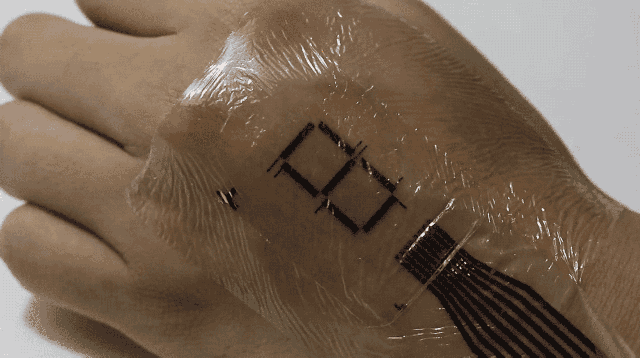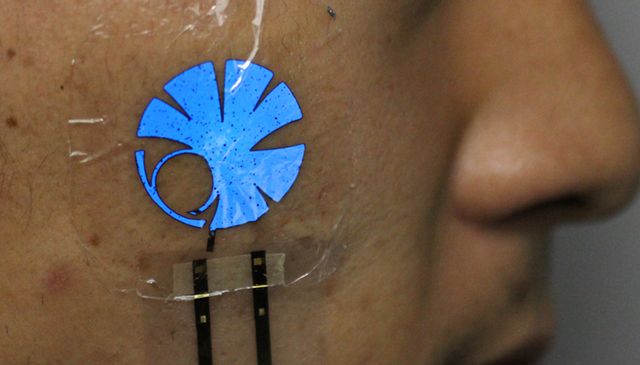Sure, Fitbits and wearables are useful, but is that the best we can do? Imagine having a fitness tracker that doubles as a temporary tattoo, or a monitoring device that doctors can paste onto a sickly organ. These are possibilities for electronic skin (or e-skin) — super-thin and ultra-stretchy material that can mimic the flexibility of human skin. Now researchers at the University of Tokyo are introducing a new method of turning it into an electronic display, at just 3 micrometers thick.

Image source: University of Tokyo.
Not only are these electronic displays 13 times smaller than a human hair, but they’re also embedded with miniscule LED lights that you can adhere to your skin. Impressively, these displays produce less heat than previous efforts, and also use up less power. So, your skin won’t be burning and the displays can be used for longer stretches of time.
According to Science Advances , the researchers created organic polymer light-emitting diodes (PLEDs), which are small sheets of energy-efficient lights, in three colors: green, blue, and red. When exposed to electrical pulses, these lights can turn on and off, mimicking pixels on a normal screen.
As futuristic as it sounds, creating light-up displays with incredibly thin film isn’t a new development. For example, in 2013, researchers were able to make flexible PLEDs thinner than spider silk. One of the major problems with these developments in the past was that they only lasted for a matter of hours when exposed to normal air. That’s the challenge the University of Tokyo decided to address.

Image source: University of Tokyo.
In an attempt to create long-lasting displays, the researchers added a new protective coating, called a passivation layer, to various kinds of e-skin. The coating kept out oxygen and water vapor well enough to keep a light working for several days.
So other than the possibility of us going about our daily lives with light-up tattoos, how could this technology change our lives?
The most obvious use would be to replace fitness trackers and medical sensors to measure a person’s pulse, blood oxygen levels, and daily steps. According to one member of the research team, Takao Someya, “A worker will be able to have building plans or an electrical diagram displayed on their skin without carrying heavy devices.”
Source: Science Alert
Advertisement
Learn more about Electronic Products Magazine





